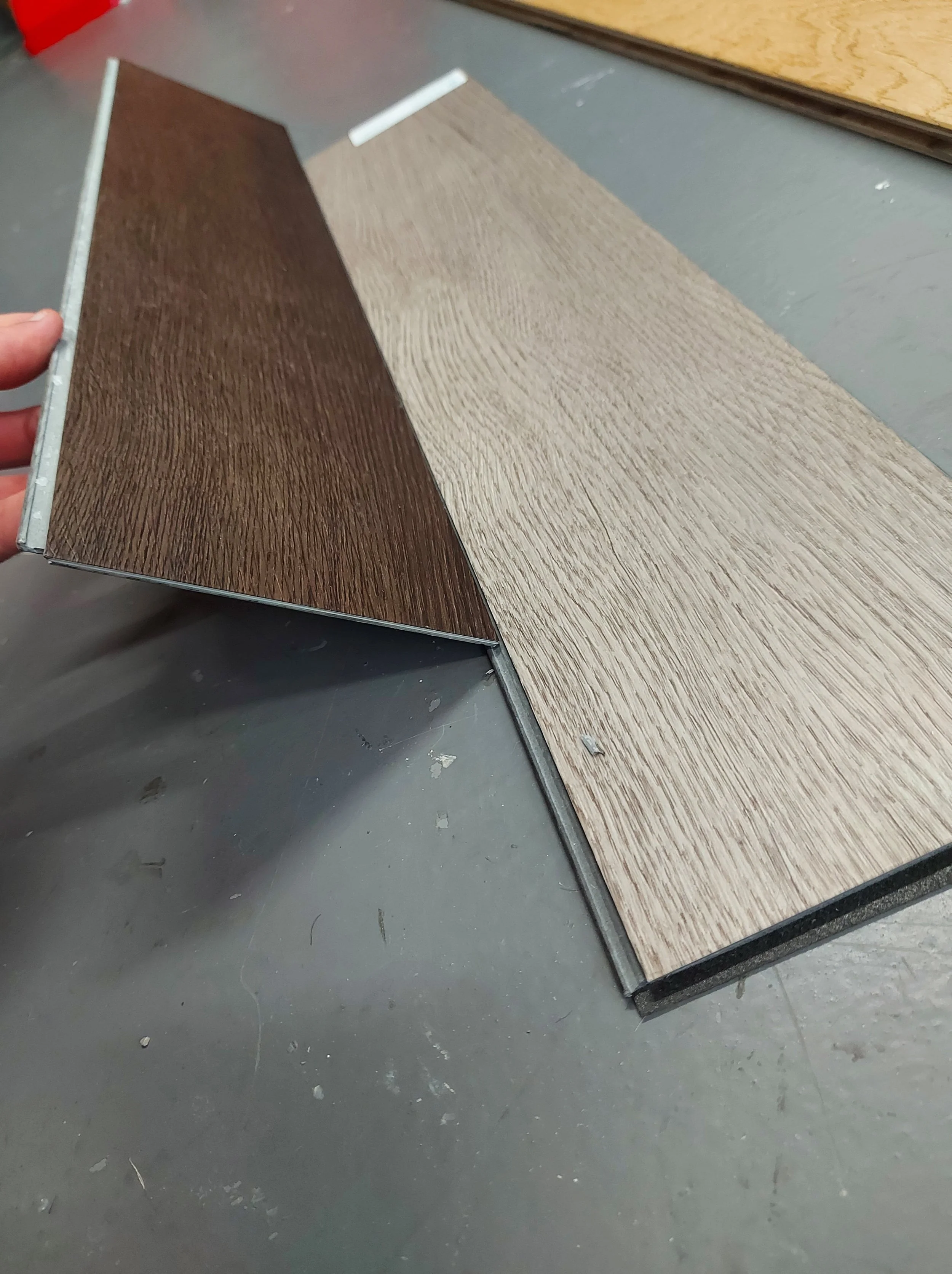Tongue and Groove or Click Lock Flooring
There are many factors to take into account when considering which flooring option works best for you. Different species of real wood, hardwood or softwood, thickness, material (laminate or vinyl), style, colour, and underlay. But there is another, more subtle factor involved in the decision making process too, the installation system that comes with the flooring. The primary installation systems with flooring are tongue and groove or click lock flooring.
Tongue and groove
Click lock system
Tongue and Groove
Tongue and groove is the traditional, older way of fitting flooring. Each wooden board has a tongue and groove. The “tongue” side - an elongated plank of wood that slots into the “groove” side of the board next to it. Technically, there are two tongues and two grooves, one of each on the long and short sides of the board. They should slot together seamlessly.
It is usual practice to glue or nail the boards together for a more secure fit. It can also be glued or nailed to the subfloor, or fitted as a floating floor. All of this makes the tongue and groove installation system a pretty versatile product to work with.
As a product, tongue and groove floors are cheaper than the same floors with a click system due to the different manufacturing methods.
Traditional tongue and groove floor - Engineered wood. Notice how the ‘Tongue’ slots into the ‘groove’ for a solid fit.
When fitted properly, the tongue and groove will allow for natural movement of the floor over time, thus reducing any squeaking or noise caused by walking.
Depending on the thickness (above 17.5 millimetres), tongue and groove flooring can be installed over joists as well as subfloors. And because of the glue, it will have more resistance to any spills from accidents, or fluctuations in moisture levels.
All of the above sounds great… but there are some complications that can arise out of tongue and groove flooring. If one of the boards should be damaged, you will need to remove a few more to get to the damaged one as they are all stuck together.
Fitting costs increase as it is generally recommended to get tongue and groove installations installed by a professional fitter, which is a worthy investment as a DIY job can easily go wrong if the boards are not glued together properly, for instance they may come apart over time and ruin the floor.
Click Lock
The click lock system is a newer product. Generally deemed to be more DIY-friendly due to its simplicity in regards to being fitted. In principle, it is similar to the tongue and groove system in that the boards slot together like a jigsaw, however the difference is that when you slot the boards together, they click and lock in place due to the hook-like structure, removing the need for glue or nails to lay the floor.
Click lock system on our rigid core vinyl (SPC) floors from the Aquacore range. Notice how the mechanism slots on top of the board next to it.
Being easy to fit, money can be saved by doing the fitting yourself, or if you still choose to use a professional fitter, the cost would be lower anyway because of how much faster click system floors are to fit, and as they can be laid as a floating floor and not need to be glued or nailed down, you will be saving money on that as well. With it being a floating floor, this will allow the wood to move and stretch naturally should there be any fluctuations in temperature or moisture.
Damaged boards are easier to replace than normal tongue and groove ones because you can just click the damaged board out of the floor and replace it, cutting material and labour costs.
Click system floors must have a subfloor and underlay. They cannot be fitted over joists. They are more expensive due to the more complicated manufacturing, but there are many cheap floors that come with a click system like laminate floors, so there are still options for saving money.
Summary
Overall, there are pros and cons to both tongue and groove or click lock flooring. Your choice will depend on your own circumstances and preferences.
Tongue and Groove
Versatile, can be fitted over a subfloor or joists
Cheaper material, but may induce more costs for materials like glue, nails, and the services of a professional fitter
Damaged boards are tricky to fix, particularly if they are in the middle of the floor
Click Lock
DIY friendly, can easily be fitted over a subfloor with good quality underlay
Damaged boards are easier to repair
Must have a subfloor and underlay to fit
More expensive than boards with a tongue and groove mechanism
Here at Timba Floors & Boards, we have a wide range of flooring to suit our customers needs. Our 5G Engineered Wood range comes with both tongue and groove systems or click lock. And the rigid core vinyl floors of our Aquacore range come with the click lock system, as do all of our laminate floors from the Urban Laminate range, making them suitable for the keen DIYer for fitting, reducing labour costs.




